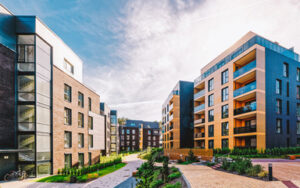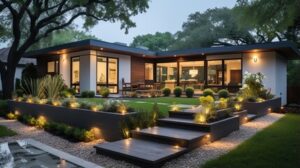Phoenix Tree Care focuses on maintaining or improving the structure and appearance of trees and shrubs. It begins before planting, with species selection and proper installation.
Mulching reduces evaporation and insulates roots. If you plant flowers in your yard, choose those that do not compete with tree roots for water or nutrients.

Pruning is the selective removal of branches, buds and growth on a plant. This horticultural practice improves the structure and safety of trees, shrubs and roses, while also encouraging flowering and fruit production. Pruning can also be used to open vistas, repair storm damage and provide clearance for structures or traffic.
When done properly, pruning is the best way to promote strong tree growth, increase airflow and light penetration, remove dead or diseased branches, reduce risk from falling limbs and improve the overall health of a tree. It’s important to note that while some pruning is required in most growing situations, excessive pruning can be as detrimental as not pruning at all.
The key to successful pruning is understanding what type of cut is needed, where the cut should be made and how the wound will heal. A clean pruning cut made immediately outside the branch collar, where a bud or branches grow out from the main trunk, triggers a series of healing hormones that compartmentalize the wound and minimizes the opportunity for pathogen intrusion and decay.
Some types of pruning include crown cleaning, crown thinning, crown raising, crown reduction and structural cuts. Crown cleaning involves removing all dead, dying or diseased branches, twigs and growth, as well as reducing the density of a canopy to allow for adequate sunlight penetration. Crown thinning is another form of pruning that improves light penetration, while also promoting airflow and removing crossing or rubbing branches.
Raising a crown refers to removing the lower branches and foliage of a tree, while crown reduction is the act of shortening a large branch or limb. Structural cuts are intended to strengthen a plant or reduce a potential hazard and can be accomplished by removing suckers from the base of a tree, reducing the length of wide-spreading branches, removing codominant leaders and addressing narrow V-shaped crotches.
A final form of pruning is removing limbs that hang over structures or traffic. This is a critical component of fall tree care, as these limbs are at an increased risk of breaking in a wind or snow storm and can cause significant damage to property. Additionally, these limbs can pose a fire hazard when they come in contact with power lines and are often the source of costly repairs to homes and businesses.
Fertilization
Trees play an important role on both a macro level across the planet and a micro level in our neighborhoods. Proper care and maintenance is essential to supporting the health, longevity, and beauty of trees.
During the establishment period (years 1 – 2), new plantings need consistent watering to establish strong root systems. This is especially critical in areas with drought conditions. Mulching around the base of the plant helps keep weeds out and provides a cool layer that can help with moisture retention. In general, a healthy soil with a pH between 5.5 and 7.0 is ideal for trees. In some cases, a nutrient application may be needed in order to address a deficiency. However, it is very important to have a professional assess the soil and determine what is needed.
Staking and guying support for newly planted or large coniferous trees is sometimes necessary. However, it is important to remember that this type of support is temporary and should be removed once the plant is established. This is because staking can interfere with the natural growth pattern of a tree and can lead to root rot and other problems.
A well-maintained tree is a valuable asset to any property and should be protected from lawn mowers, snowblowers, and other equipment that can damage or break branches. If a branch is extending too close to a structure, it should be pruned to reduce the risk of injury or property damage.
Regularly monitoring the condition of your trees and ensuring that they are free from invasive species is important for the overall health of your landscape. It also can prevent costly damage or removal in the future.
Tree service companies provide a range of services including pruning, trimming, plant health care, cabling and bracing, transplanting, and consulting. When hiring a company to perform these tasks, be sure to check for qualifications and certifications. The ISA has an online directory of Certified Arborists. It is also important to look for safety and insurance policies as tree work can be dangerous. A qualified arborist will be aware of the hazards associated with their job and will take precautions to protect themselves and others.
Insect Control
When insect pests like aphids, caterpillars, or bark beetles invade a tree or shrub’s canopy, they must be controlled. This is done by spraying the foliage with insecticides. In the case of aphids, this may also be followed with a fungicide. This type of chemical control works best if it is applied at the right time in the growing season to be effective.
Insecticides must be used carefully, as they can have detrimental effects on the environment and other organisms. This is particularly true in urban areas where there are many roads, driveways, and parking lots. Insecticides are sometimes swept into storm sewers and into streams or leached into groundwater. They can also be carried offsite by wind in spray drift, and they can contaminate homes and businesses.
A good professional has a full understanding of the interaction between trees, their soil, nutrient requirements, diseases, insects, and other living and non-living factors. He or she will be able to provide sound advice and recommend the most effective treatment.
Some insect pests are naturally controlled by parasites, predators, or herbivores. These types of controls are called biological control and can reduce or eliminate the need for chemical pesticides.
Invasive plants, such as vines, can be controlled by pruning or physical removal. When left uncontrolled, these species can disrupt the structure of a tree, inhibit its growth, and compete with native vegetation.
Often, tree health care includes the use of organic and inorganic chemical application to address specific needs or bolster a plant’s ability to cope with stress. These applications are determined by a certified arborist and performed by specialized technicians.
Whenever possible, it is advisable to use preventive tree care services that will promote the health and vitality of your trees. This can include periodic pruning, trimming, and fertilizing. In addition, the proper installation of irrigation systems and the removal of dead or diseased limbs should be considered. If you are in need of professional tree services, it is important to hire a qualified, licensed, insured, and experienced contractor. You can learn more about a prospective tree service provider by asking for references, checking licensing credentials, and requesting proof of insurance.
Removal
Tree removal is a complex process that can be dangerous for the untrained. It involves a complete assessment of the site and the tree, planning the safest and most efficient way to remove the tree, cutting it down and disposing of the remains. Removing a large tree requires the use of heavy equipment such as chainsaws and cranes, and should only be done by trained professionals to ensure safety and efficiency.
There are many reasons for removing a tree, including damage from storms, old age, insect infestation or disease, or the fact that it is occupying space needed by other plants or structures. Often, pruning can solve problems caused by overcrowding, but sometimes the tree is just too close to structures, sidewalks, driveways or homes and needs to be removed to prevent damage as it matures.
Invasive species may also need to be removed, as they often compete with other trees for resources and can choke out the tree’s own root systems. In addition, a lot of work is required to get rid of the roots and stump of a tree, which can take up valuable ground.
If a problem is found, an arborist will assess the situation and determine the best course of action. If the problem can be resolved with pruning, then that is the recommended option. Otherwise, a professional will remove the tree.
Prior to the removal, the arborist will make sure that all items in the area are out of the way, including outdoor furniture, vehicles and fire pits, and that there is a clear path away from the tree’s path in case it falls in the wrong direction. Then, they will cut a ‘felling cut’ near the base of the trunk or crown to direct the fall and begin to lower the tree, taking care to avoid any unnecessary limbs as they go.
It is possible that some homeowners can take care of their own removing if there’s enough room for the tree to fall and no other risk factors, but this is a project best left to the pros. It’s important to remember that trees play a crucial role in the environment, including air quality, climate amelioration and biodiversity, and removing a large number of them can have far-reaching consequences for the local ecosystem.




